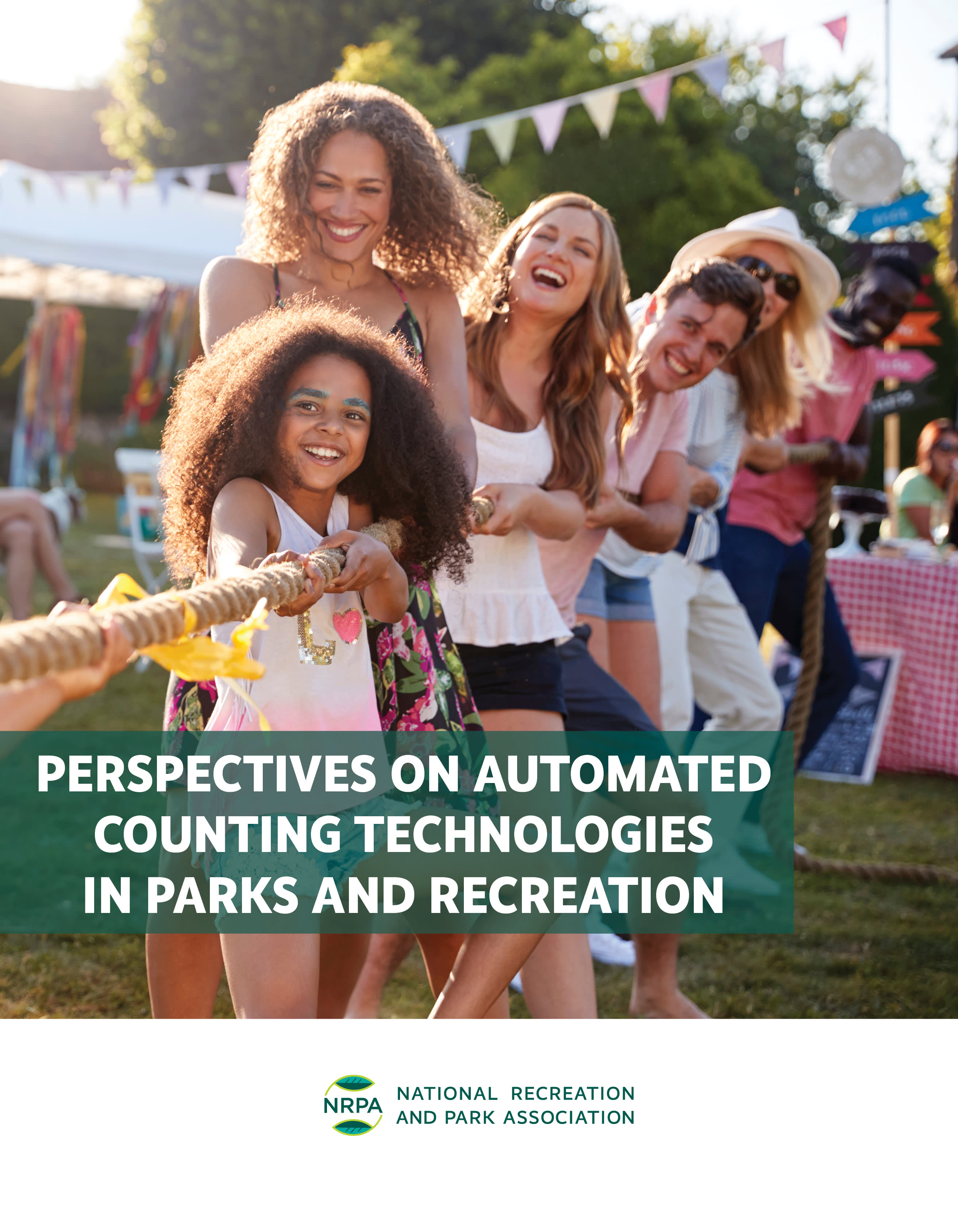As monitoring systems become more prevalent in our public spaces, park and recreation agencies eagerly seek information on how data collected from these systems can assist with operations, programming, public safety and other aspects of managing recreation activity and green spaces. This report explores the needs and concerns of automated counting technologies like cameras, counters and cell phone data among local park and recreation professionals, community members and other stakeholders, specifically addressing selection, logistics, usage, maintenance, challenges and privacy concerns associated with these technologies.
The Perspectives on Automated Counting Technologies in Parks and Recreation report includes three components. A literature and municipal statutes scan provided background data to guide the development of field research protocols and understanding of general legal perspectives on public monitoring, followed by focus groups with park and recreation professionals to collect perceptions of the state of automated counting technology in the field. We also polled a random, representative sample of 1,000 members of the U.S. public to understand their opinions about park and recreation agencies using these automated counting technologies in park and recreation spaces.
Read the report
Key Findings
- Intended uses for automated counting technologies included collecting visitation numbers and activity, informing planning and design, improving management and operations, measuring economic impact, supporting alternate funding efforts, and supporting fairness.
- Many municipal departments adjacent to parks and recreation showed interest in using the data collected by park and recreation agencies with these technologies.
- Prominent challenges faced by the agencies when adopting monitoring and counting technologies included the inability to measure what people are doing in the parks, data overwhelm, data inaccuracy and unavailability, and difficulty calculating the return on investment of the technologies.
- Public support of local park and recreation agencies using monitoring systems like cameras, counters and cellphone data was highest for crime prevention and mitigation (62 percent) and in parking lots (69 percent) and parks (59 percent). They also prefer that municipalities post signage for these technologies at each location (65 percent).
- The report includes several guidelines on this topic, including questions to answer when deciding whether to employ these technologies, advice for agencies when preparing to select these technologies and selected topics for future research.


